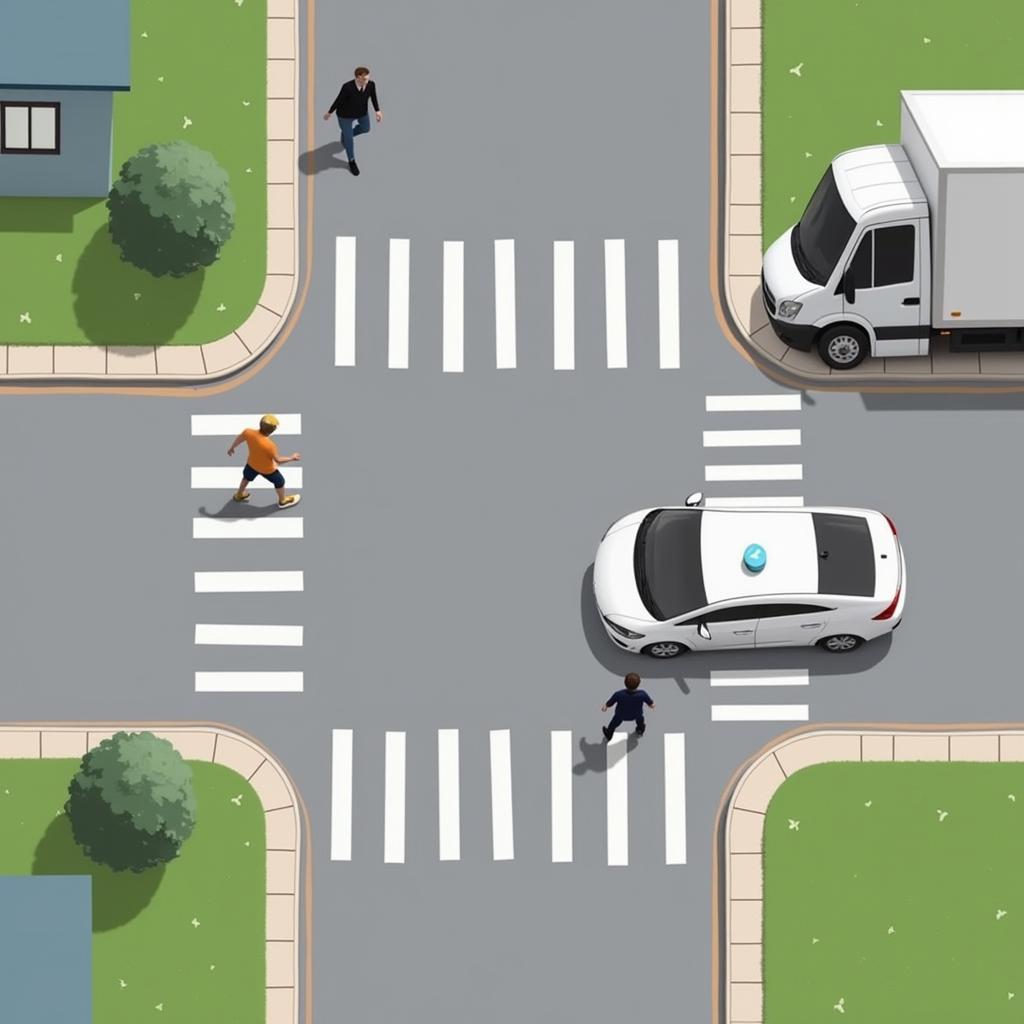Self-driving cars, while promising a future of automated transportation, raise complex ethical dilemmas reminiscent of the classic trolley car problem. This analogy arises because autonomous vehicles, much like the trolley conductor, may face unavoidable accident scenarios where a decision must be made about which potential harm to prioritize. How do we program these vehicles to make such choices, and what are the implications of these decisions?
The Trolley Problem and Autonomous Vehicles: A Direct Correlation
The trolley problem, a thought experiment in ethics and psychology, presents a scenario where a runaway trolley is headed towards five people tied to the tracks. You have the option to pull a lever, diverting the trolley onto a side track where one person is tied. Do you sacrifice one life to save five? This moral dilemma mirrors the potential situations self-driving cars might encounter. Imagine a scenario where a self-driving car must swerve to avoid a pedestrian, but doing so risks colliding with a wall, potentially harming the passengers inside. How Do Self-driving Cars Invite Comparisons With Trolley Car Problems in such situations? The answer lies in the necessary pre-programming of ethical decision-making algorithms.
 Self-Driving Car Facing a Trolley-like Dilemma
Self-Driving Car Facing a Trolley-like Dilemma
Programming Ethics: The Challenge of Defining “Right” and “Wrong”
The core challenge lies in translating human ethical reasoning into the language of computer code. How do we program a self-driving car to prioritize certain lives over others, or to assess the value of minimizing overall harm versus adhering to traffic laws? These are complex philosophical questions with no easy answers. Do we opt for a utilitarian approach, minimizing overall harm, or a deontological one, focusing on inherent rights and duties? The implications of these programming choices are significant, potentially shaping public perception and acceptance of autonomous vehicles.
Public Perception and the Future of Self-Driving Cars
Public perception plays a crucial role in the adoption of self-driving technology. The fear of a machine making life-or-death decisions, however rare, is a significant hurdle. Transparency in how these ethical algorithms are designed and implemented is crucial for building public trust. Open discussions, public forums, and clear communication from manufacturers are essential to address these concerns.
Who Bears Responsibility? Legal and Ethical Implications
The question of liability in accidents involving self-driving cars is another complex issue. Who is responsible when a self-driving car makes a decision that results in harm? Is it the manufacturer, the owner, or the software programmer? Establishing clear legal frameworks is crucial for the widespread adoption of this technology. These legal considerations are intricately linked with the ethical dilemmas posed by the trolley problem, further emphasizing the need for careful consideration and public discourse.
“The development of robust and ethically sound decision-making algorithms is paramount for the success of autonomous vehicles,” says Dr. Emily Carter, a leading expert in artificial intelligence and ethics at the Massachusetts Institute of Technology. “Transparency and public engagement are key to building trust and ensuring the responsible development of this technology.”
How Do Self-Driving Cars Invite Comparisons With Trolley Car Problems? FAQ
Here are some frequently asked questions about the ethical dilemmas of self-driving cars:
- What is the trolley problem? The trolley problem is a thought experiment that explores ethical decision-making in unavoidable accident scenarios.
- How does the trolley problem relate to self-driving cars? Self-driving cars may face similar unavoidable accident scenarios, requiring pre-programmed ethical decision-making algorithms.
- What are the ethical challenges in programming self-driving cars? Defining “right” and “wrong” in code, prioritizing lives, and balancing overall harm minimization with adherence to traffic laws are key ethical challenges.
- How does public perception impact the future of autonomous vehicles? Public concerns about machines making life-or-death decisions need to be addressed through transparency and open communication.
- Who is liable in accidents involving self-driving cars? The question of liability is complex and requires clear legal frameworks.
- What is the role of AI ethics in the development of autonomous vehicles? AI ethics plays a crucial role in designing decision-making algorithms that are ethically sound and reflect societal values.
- How can we ensure the responsible development of self-driving car technology? Open discussions, public forums, and collaboration between experts, manufacturers, and policymakers are essential for responsible development.
 Ethical Programming of Autonomous Vehicles
Ethical Programming of Autonomous Vehicles
In conclusion, how do self-driving cars invite comparisons with trolley car problems? The answer lies in the complex ethical dilemmas they present, requiring us to grapple with difficult questions about how to program machines to make life-or-death decisions. Addressing these ethical challenges through transparency, public engagement, and robust legal frameworks is essential for the safe and successful integration of self-driving cars into our society. For further support and information regarding automotive technology and ethical considerations, please connect with us at AutoTipPro. You can reach us at +1 (641) 206-8880 or visit our office at 500 N St Mary’s St, San Antonio, TX 78205, United States.





Leave a Reply